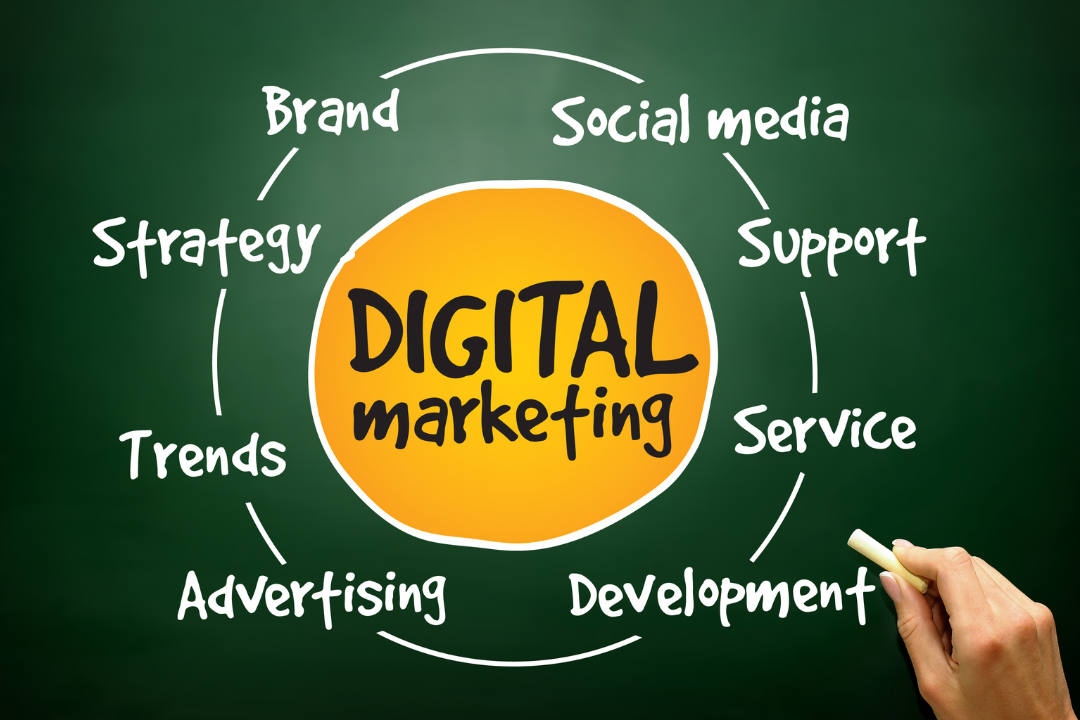The sector of digital marketing is dynamic and constantly changing. Staying ahead of the curve is crucial for businesses aiming to maximize their online presence and engagement. In this blog post, we’ll delve into the latest digital marketing trends that every marketer and business owner should be aware of to craft successful strategies in the digital landscape.
1. Video Content Dominance:
a. Short-form Videos on the Rise:
Short-form videos, popularized by platforms like TikTok and Instagram Reels, continue to dominate social media. Marketers are leveraging these bite-sized videos for engaging and creative brand storytelling.
b. Live Video Streaming:
An increasingly effective approach for communicating with audiences in real-time is live streaming. Platforms like Facebook Live and YouTube Live enable brands to connect authentically, answer questions, and showcase behind-the-scenes content.
c. User-Generated Video Content:
Encouraging users to create and share video content about a brand or product fosters authenticity and builds a sense of community. User-generated videos can be powerful testimonials and endorsements.
2. Social Commerce Integration:
a. Shoppable Posts:
Social media platforms are integrating e-commerce features directly into their interfaces. Shoppable posts on Instagram, Facebook, and Pinterest allow users to make purchases without leaving the platform, streamlining the customer journey.
b. In-App Purchases:
The integration of in-app purchase options simplifies the buying process, enhancing user experience and driving more direct sales through social media channels.
c. Social Proof in Shopping:
The use of social proof, such as reviews and testimonials, within the shopping experience on social media platforms is gaining traction. It builds trust and confidence among potential customers.
3. Interactive Content Engagement:
a. Polls, Quizzes, and Surveys:
Interactive content, such as polls and quizzes on platforms like Instagram and Twitter, encourages active engagement. Brands use these features to gather insights, boost interaction, and enhance the overall user experience.
b. Augmented Reality (AR) Experiences:
AR is transforming how users engage with content. Brands are implementing AR features for virtual try-ons, product visualizations, and interactive brand experiences, providing a unique and immersive connection with their audience.
c. Interactive Email Campaigns:
Interactive elements in email campaigns, such as clickable surveys or quizzes, increase engagement and offer a personalized experience directly in the user’s inbox.
4. Search Engine Optimization (SEO) Evolution:
a. Core Web Vitals and Page Experience:
Google’s algorithm updates now prioritize user experience metrics, known as Core Web Vitals. Page load speed, interactivity, and visual stability play a crucial role in search rankings.
b. Voice Search Optimization:
With the increasing use of voice-activated devices, optimizing content for voice search is imperative. Conversational keywords and content structured for natural language queries are gaining significance.
c. Local SEO Emphasis:
Local SEO is becoming more critical, especially for brick-and-mortar businesses. Optimizing for local search terms, Google My Business and local directories enhances visibility in local search results.
5. AI and Machine Learning Integration:
a. Personalized Marketing Campaigns:
AI enables marketers to analyze vast amounts of data to create personalized and targeted campaigns. From product recommendations to tailored content, AI enhances the customer experience.
b. Chatbots for Customer Interaction:
Chatbots powered by machine learning algorithms provide instant customer support, answer queries, guide purchases, and enhance overall user satisfaction.
c. Predictive Analytics for Forecasting:
Leveraging predictive analytics allows marketers to anticipate trends, understand customer behavior, and make data-driven decisions for future campaigns.
6. Ephemeral Content and Stories:
a. Disappearing Content Popularity:
Ephemeral content, popularized by Snapchat and adopted by platforms like Instagram and Facebook, offers a sense of urgency and authenticity. Stories provide a casual and immediate way for brands to connect with their audience.
b. Story Ads and Sponsored Content:
Marketers are increasingly utilizing story features for advertising. Sponsored stories seamlessly integrate into the user’s experience, offering a less intrusive yet effective advertising format.
c. Story Highlights for Brand Narratives:
Story highlights on Instagram allow brands to curate and showcase their best-performing stories, creating a lasting narrative that users can explore even after the initial 24-hour period.
7. Content Diversification:
a. Podcasting and Audio Content:
The popularity of podcasts continues to rise. Marketers are exploring the potential of audio content to reach audiences during activities like commuting, exercising, or working, where visual content may not be feasible.
b. Long-Form Content Resurgence:
While short-form content dominates, long-form content is making a comeback. In-depth articles, comprehensive guides, and extensive blog posts are valuable for SEO and establishing authority in a niche.
c. Webinars and Virtual Events:
Hosting webinars and virtual events not only positions brands as industry experts but also provides an interactive platform for audience engagement and lead generation.
8. Inclusive and Purpose-Driven Marketing:
a. Diversity and Inclusivity Campaigns:
Brands are increasingly embracing diversity and inclusivity in their marketing campaigns. Authentic representation of different cultures, backgrounds, and perspectives resonates well with diverse audiences.
b. Purpose-Driven Marketing:
Consumers are gravitating towards brands with a clear sense of purpose. Marketing efforts that align with social and environmental causes create a positive brand image and foster customer loyalty.
c. Transparency in Marketing Practices:
Transparent communication about business practices, sourcing, and sustainability efforts builds trust and credibility among consumers, contributing to a positive brand image.
Conclusion:
The digital marketing landscape is continually evolving, and staying abreast of the latest trends is pivotal for success. From the dominance of video content to the integration of social commerce, interactive engagement, and the evolving SEO landscape, marketers must adapt their strategies to align with these dynamic shifts. By embracing the latest trends, businesses can not only maintain relevance but also forge meaningful connections with their target audience in the ever-changing digital realm. In this era of rapid digital transformation, staying ahead means not just following trends but anticipating and innovating for the future.





